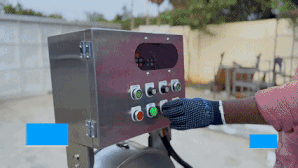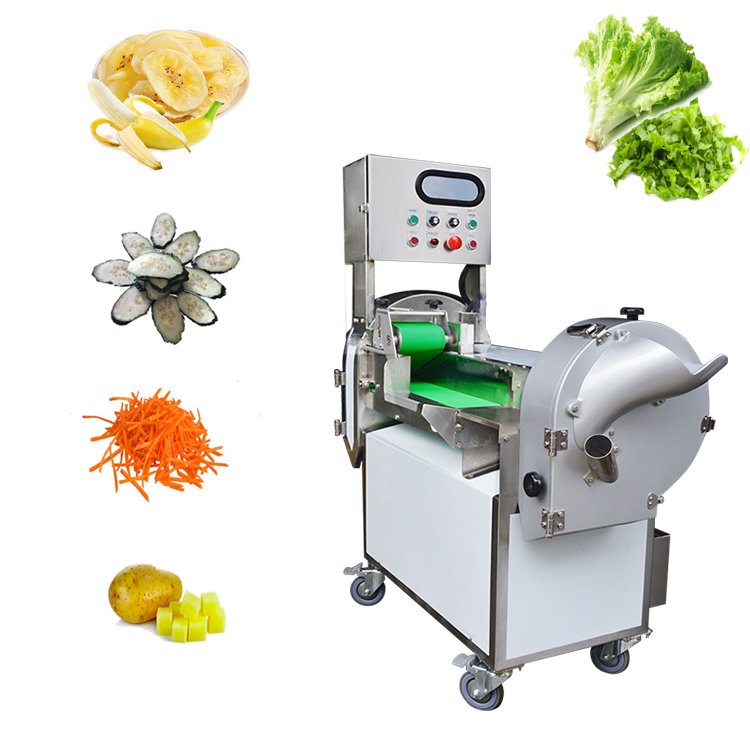Recently, one of our long-term customers shared their experience with a vegetable cutting machine they had purchased from another supplier. Attracted by an affordable price and an appealing YouTube video, they decided to buy it. However, upon using the machine, they discovered a major issue: the cutter wobbled constantly during operation, whether slicing vegetables or dicing them into cubes. This left them deeply dissatisfied, and they regretted not purchasing from us.

If you’re experiencing similar issues or are curious about the causes of such instability, here’s a detailed breakdown of why some multifunctional vegetable cutting machines shake and how to avoid these problems.
Common Causes of Shaking in Commercial Cutting Machines
- Design Flaws in the Machine’s Center of Gravity and Weight Distribution
- A poorly designed center of gravity or improper weight distribution can lead to a shaky cutter. If the machine hasn’t undergone sufficient testing during the design phase, this issue becomes permanent, requiring a complete redesign to fix.
- Resonance Between the Motor and the Machine
- Resonance occurs when the motor’s vibrations synchronize with the machine’s frame, causing excessive wobbling. This problem arises from skipping resonance testing during product development. In some cases, increasing the motor’s rotational speed can reduce the shaking.
- Low-Quality Steel Frame
- Machines built with steel of insufficient hardness or thickness are prone to vibrations. Customers with welding expertise might add reinforcements to increase the machine’s stability. However, this is a temporary solution and could void warranties.
- Low-Powered Motor
- To cut costs, some manufacturers use motors with lower power output. These motors struggle to handle harder vegetables like potatoes, carrots, and onions, leading to intermittent slowing and increased wobbling during cutting or shredding tasks.
Impact on Performance and Longevity
When a commercial vegetable cutter shakes excessively, it affects not only its performance but also its safety and durability. Over time, this instability reduces the machine’s lifespan, costing more in repairs or replacements.
How to Avoid These Issues
- Choose a Reputable Supplier
Always purchase from suppliers known for high-quality, industrial-grade machines. Our multifunctional vegetable cutting machines are trusted in the food processing industry for their reliability and durability. - Look for Machines with Proven Designs
Ensure the cutter has been tested for balance, motor resonance, and stability under high workloads. Proper testing ensures smooth performance whether you’re slicing cucumbers, shredding carrots, or dicing onions. - Consider Material and Build Quality
Machines made from food-safe SUS304 stainless steel provide superior stability and corrosion resistance, making them ideal for automatic electric food processing machines. - Evaluate Motor Capacity
A high-powered motor is essential for cutting a variety of hard and soft vegetables, including root vegetables like potatoes and carrots.
Conclusion
Shaking in vegetable cutting machines is a common issue that can disrupt operations and reduce efficiency. By understanding the causes and choosing the right supplier, you can ensure your automatic multifunctional chopper, slicer, or dicer performs smoothly, whether you’re cutting fruit, processing tomatoes, or shredding cabbage.
If you have questions or want to explore reliable vegetable cutting machines for your industrial food processing needs, feel free to reach out to us. Visit our website at www.lianmachinery.com to learn more about our commercial cutters and slicers.
Take a look at the video below for a side-by-side comparison of our machines versus others on the market. Don’t compromise on quality—invest in equipment that delivers top performance every time!

